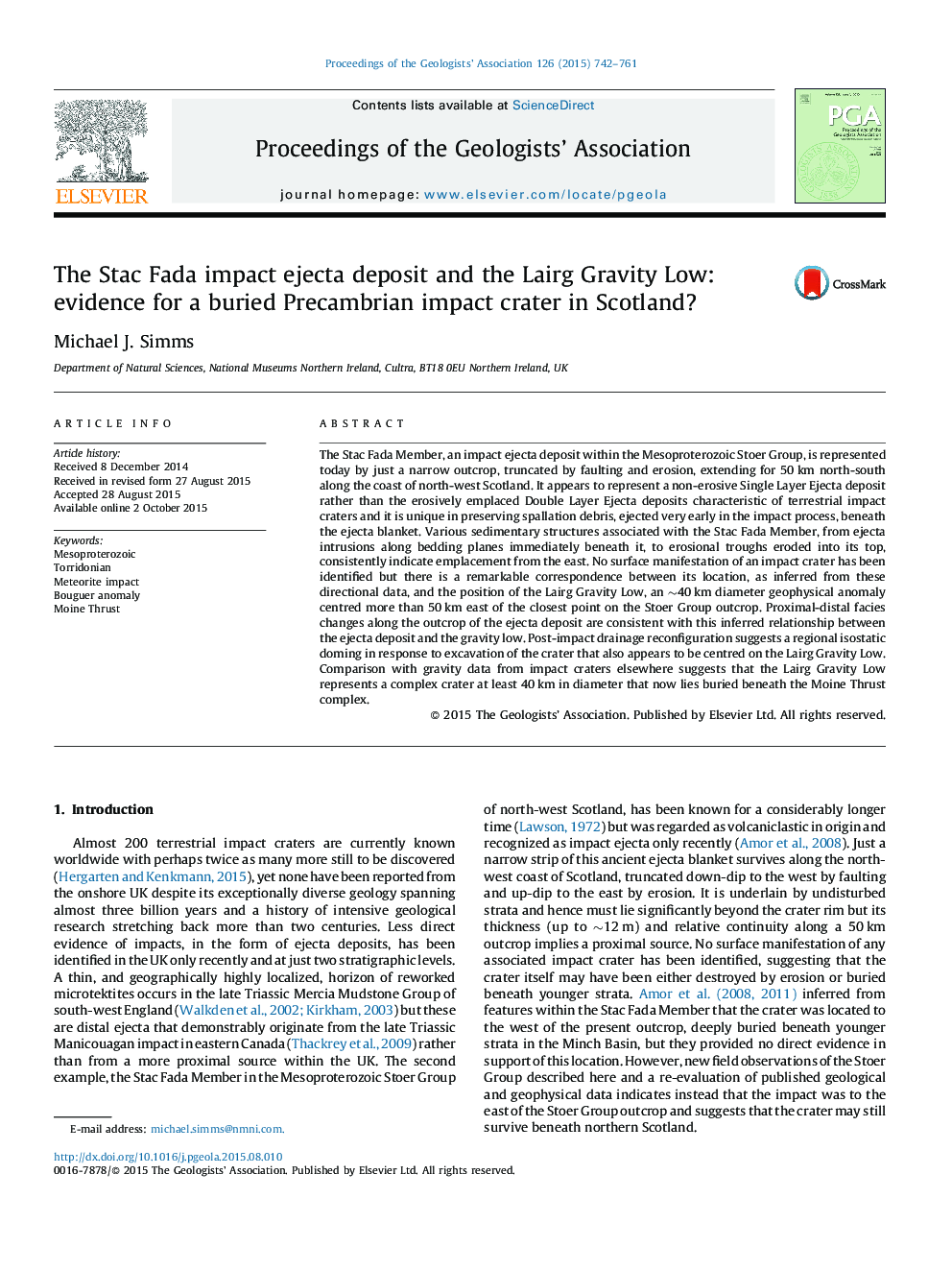| Article ID | Journal | Published Year | Pages | File Type |
|---|---|---|---|---|
| 6445318 | Proceedings of the Geologists' Association | 2015 | 20 Pages |
Abstract
The Stac Fada Member, an impact ejecta deposit within the Mesoproterozoic Stoer Group, is represented today by just a narrow outcrop, truncated by faulting and erosion, extending for 50Â km north-south along the coast of north-west Scotland. It appears to represent a non-erosive Single Layer Ejecta deposit rather than the erosively emplaced Double Layer Ejecta deposits characteristic of terrestrial impact craters and it is unique in preserving spallation debris, ejected very early in the impact process, beneath the ejecta blanket. Various sedimentary structures associated with the Stac Fada Member, from ejecta intrusions along bedding planes immediately beneath it, to erosional troughs eroded into its top, consistently indicate emplacement from the east. No surface manifestation of an impact crater has been identified but there is a remarkable correspondence between its location, as inferred from these directional data, and the position of the Lairg Gravity Low, an â¼40Â km diameter geophysical anomaly centred more than 50Â km east of the closest point on the Stoer Group outcrop. Proximal-distal facies changes along the outcrop of the ejecta deposit are consistent with this inferred relationship between the ejecta deposit and the gravity low. Post-impact drainage reconfiguration suggests a regional isostatic doming in response to excavation of the crater that also appears to be centred on the Lairg Gravity Low. Comparison with gravity data from impact craters elsewhere suggests that the Lairg Gravity Low represents a complex crater at least 40Â km in diameter that now lies buried beneath the Moine Thrust complex.
Related Topics
Physical Sciences and Engineering
Earth and Planetary Sciences
Geology
Authors
Michael J. Simms,
